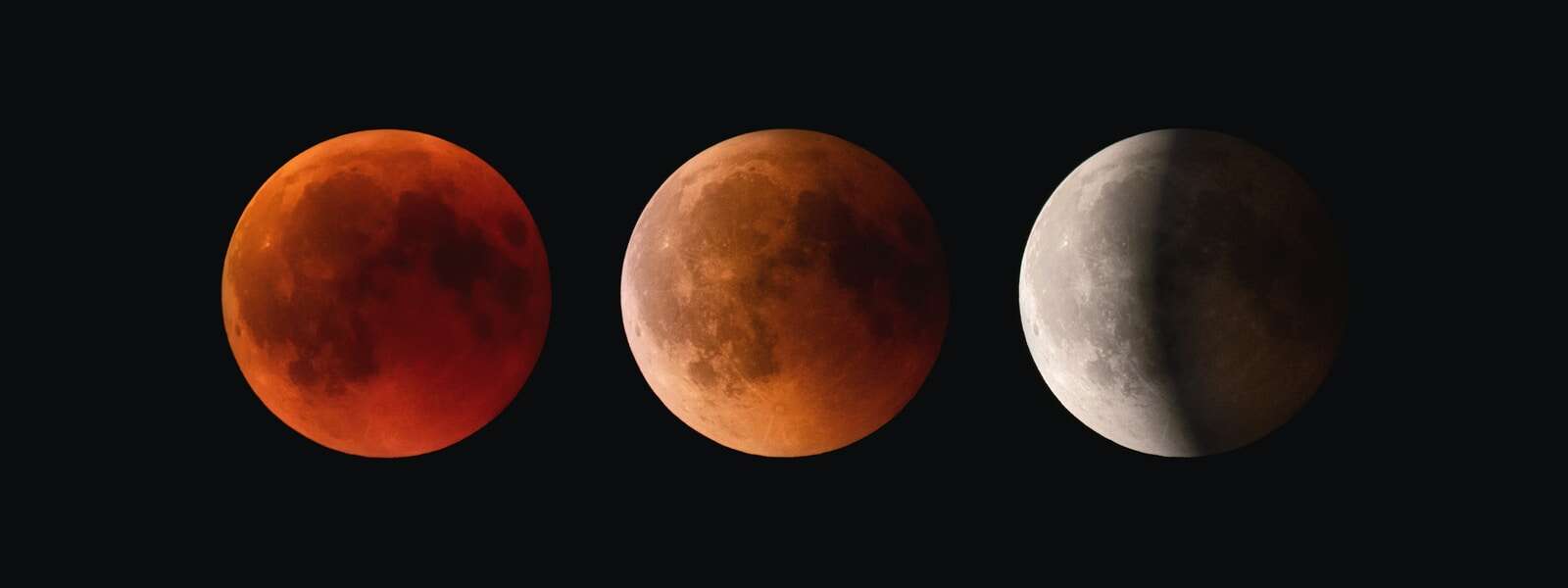Blood Flower Moon Lunar Eclipse. That’s the name of this month’s biggest celestial event, and of the two total lunar eclipses set to take place this year, it’s the one you don’t want to miss, says a U of G physicist.
Orbax is a lecturer in the Department of Physics in the College of Engineering and Physical Sciences. He is also the co-founder of Royal City Science, a not-for-profit organization dedicated to STEM (science, technology, engineering and mathematics) education, and one-half of Orbax and Pepper Do Science, an educational science-based platform.

The eclipse will begin May 15 around 10:30 p.m. ET and end on May 16 around 2 a.m. The total lunar eclipse, when the moon is completely blocked by the earth’s shadow, is predicted to occur between 11:30 p.m. and 12:50 a.m. ET.
It will also be a “blood moon” and appear to have a red or orange glow during the eclipse, said Orbax.
“When light passes through the Earth’s atmosphere, it scatters, and shorter wavelengths such as blue light are diverted away from the moon, whereas longer wavelengths like red light will pass through and illuminate the moon,” explained Orbax, adding the reddish glow is also due to Earth’s shadow.
He explained that lunar eclipses occur because the moon’s orbit is not a perfect circle locked into a singular plane.
“Instead, the moon kind of spirals around the Earth and that’s why a lunar eclipse only occurs when the orbit lines up in an exact way such that the Earth’s shadow blocks out the light on the full moon,” he said.
The “flower” part of the name simply refers to the fact that this eclipse will take place in May during spring bloom, said Orbax.
How to watch the eclipse
This lunar eclipse should be easy to observe because the moon is already large and bright in May, he added. No complex equipment will be necessary to watch, but “if you want to get some extra definition while viewing, a pair of binoculars or a small telescope would help,” he said, adding that he recommends getting away from the city to avoid light pollution.
With NASA planning to return humans to the moon through the Artemis missions, now is “definitely the time to watch the eclipse,” he added.
“We may see Canadian astronauts living and working on the moon within some short few years. I think it’s an incredible connection to be able to look up in the sky and one day think our children, our friends, our neighbours may be working up there trying to unfurl the secrets of the universe.”
Orbax recently discussed the upcoming lunar eclipse with the Toronto Star, Global News, and GuelphToday. He is available for interviews.
Contact:
Orbax
orbax@uoguelph.ca
